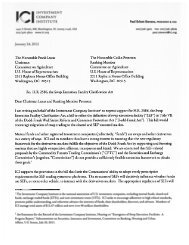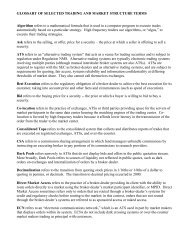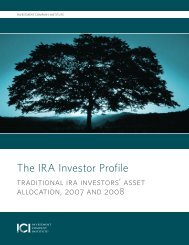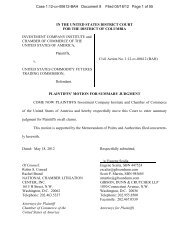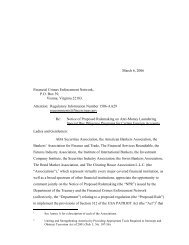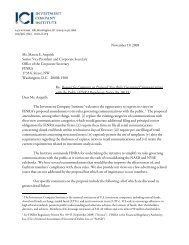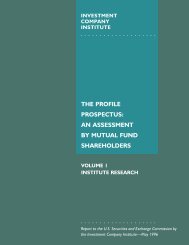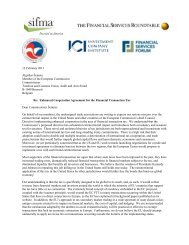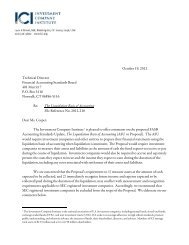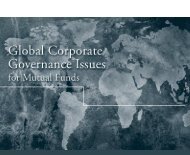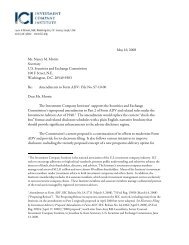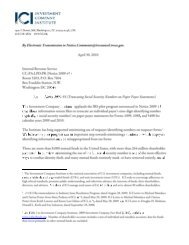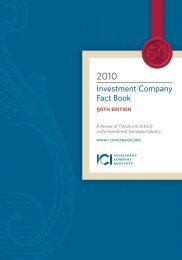Understanding Shareholders' Use of Information and Advisers (pdf)
Understanding Shareholders' Use of Information and Advisers (pdf)
Understanding Shareholders' Use of Information and Advisers (pdf)
- No tags were found...
You also want an ePaper? Increase the reach of your titles
YUMPU automatically turns print PDFs into web optimized ePapers that Google loves.
Respondents who had not consulted a pr<strong>of</strong>essional financialadviser <strong>and</strong> those who had were equally likely to monitortheir fund investments. However, more respondents who hadconsulted an adviser followed a fund’s rate <strong>of</strong> return <strong>and</strong> fundfees <strong>and</strong> expenses (Figure 20).Among respondents who consulted a pr<strong>of</strong>essional financialadviser, those solely placing fund purchase orders through anadviser were the most vigilant, with all indicating that theymonitor their fund investments. In contrast, 89 percent <strong>of</strong>respondents who effectively delegate all fund investmentdecisions to an adviser said they monitor their fund investments(see Figure 50 in Appendix B).Sources <strong>of</strong> <strong>Information</strong>Respondents who said they monitor their mutual fundinvestments typically reported using three sources to garnerthe information they needed. Two mutual fund companydocuments—account statements <strong>and</strong> annual reports—wereamong the most frequently consulted post-purchase informationsources. Three quarters <strong>of</strong> respondents reported usingaccount statements to monitor their fund investments <strong>and</strong>half indicated using annual reports. Newspapers <strong>and</strong> financialadvisers were also among the most frequently cited sources <strong>of</strong>post-purchase mutual fund information, with about two fifths<strong>of</strong> respondents stating they consulted each.Both respondents who had <strong>and</strong> had not consulted afinancial adviser typically indicated using three sources toobtain the information they needed to monitor their fundinvestments. The sources these two groups consulted, however,differed. More respondents without an adviser turnedto mutual fund listings in newspapers <strong>and</strong> fund rankings inbusiness magazines than did respondents with an adviser(Figure 21).FIGURE 20Mutual Fund <strong>Information</strong> Monitored at Least Four Times a Year 1(percent <strong>of</strong> respondents)<strong>Use</strong> <strong>of</strong> a Pr<strong>of</strong>essional Financial AdviserAllRespondents Had Consulted Had Not ConsultedMonitor any type <strong>of</strong> mutual fund information 95 96 94Total dollar value <strong>of</strong> an account 90 89 90Yield or rate <strong>of</strong> return 80 83 74*Price per share <strong>of</strong> a fund 78 78 77Economic or market conditions 61 61 61Fund's risk level 50 52 49Fees <strong>and</strong> charges <strong>of</strong> the fund 46 49 41*Changes in the fund manager 24 22 27Mean number <strong>of</strong> items monitored 4 4 4Median number <strong>of</strong> items monitored 5 5 51Multiple responses included.Note: Number <strong>of</strong> respondents varies.*Respondents who had not consulted an adviser are statistically different from those who had at the 95 percent confidence level.24



